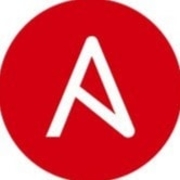I use Red Hat Enterprise Linux for deploying servers to install Oracle Databases.
The performance that we get is very satisfactory. Usually, when you compare the results against previous databases that were run, you realize, "Oh, this is really good." But the performance depends on the hardware you put it on. If you put it on a very powerful server, the performance will be better. If you put Linux on a server that is not powerful, the performance will not be there.
All of its features are valuable. It's very good when it comes to building with a sense of assurance and for ensuring availability across different infrastructures.
Because most databases run on Linux, that's what makes this solution so important. If you install a Unix system and want to use a database, you won't have trouble finding a database to run on it. But if you are using Windows, other than using a Microsoft database, you're likely going to have problems. For example, if you want to run Oracle Database on Windows, it could be problematic. Linux, on the other hand, is wide open. People use it for development and that's why we have chosen to use it.
Also, it's great to have IP tables for firewalls in open source. That's the way things are supposed to be going. When you create a file system they ask you if you would like to encrypt the data, and that's great for securing things.
If you download Oracle Linux, it is very easy. And when it comes to updating Oracle Linux, it does not require subscribing to the repo to do the update. When you install Oracle Linux, the repo directory contains all the files needed to run a DNS or VM update. Whereas with Red Hat, if you download the ISO and do the installation, once you finish, they force you to subscribe to their environment to do VM updates.
I understand that Red Hat would like statistics on how many people are implementing certain kinds of servers, so they force them to create an account. I agree that, when first downloading it, it makes sense that I have to provide my information. But when I want to update, it shouldn't be necessary.
Sometimes, I'm just doing a proof of concept and once I'm finished, the server is gone. In that situation, Oracle Linux doesn't ask me to subscribe for that server, because they don't need to know. The server may only be there for a second and, once I finish, I delete it. If Red Hat would remove that requirement, that would be great. If I want to download the OS, I understand that they need to know who I am, but they don't need to know that information when I'm building a server, unless it is a production server. If it's not a production server, they shouldn't force people to register.
Also, it can be difficult to find the RPMs I'm looking for. For example, if you want to recognize a Windows file system in Red Hat, you have to download a package outside of Red Hat. I searched on Google and found the RPM, but I struggled to find it. Once I put it in, everything worked fine. When Red Hat doesn't have something, and others develop it as open source, they should include that RPM in Red Hat's repo so it's not a struggle to find it.
I have been using Red Hat products for more than 20 years.
The product is very good. Very mature.
We intend to increase our use of Red Hat Enterprise Linux. We are using it more for new stuff.
I barely call Red Hat when I run into problems. I Google them and find out the solution and move forward. You can find fixes for most of the issues online.
I also use Oracle Linux which is the same as Red Hat Enterprise Linux. Everywhere that I deploy Oracle Linux, if I deploy Red Hat it works fine.
I was involved in the initial testing. We tested it until we could make it work fine and then we provided documentation for the people who would put it into production. But we only did the testing. We work on how it is deployed and document any problems we run into and how to fix them.
The ease or difficulty of the setup will depend on a number of things.
The solution is self-explanatory. Most applications run on Red Hat Linux and related products.

















